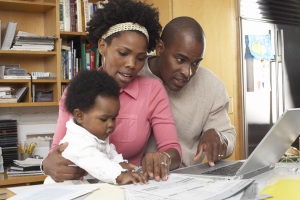 (BPT) – The last few years have brought record destruction from natural disasters. While disasters such as Hurricane Isaac, Superstorm Sandy or the Oklahoma tornadoes are tragic and unavoidable, there is value in being prepared for the challenges Mother Nature throws our way.
(BPT) – The last few years have brought record destruction from natural disasters. While disasters such as Hurricane Isaac, Superstorm Sandy or the Oklahoma tornadoes are tragic and unavoidable, there is value in being prepared for the challenges Mother Nature throws our way.
Technology can help you prepare for the unknown and get back on your feet more quickly. Whether it’s building an emergency plan or securing your important documents, a little planning can make it easier to recover from a disaster. And fortunately, today, abundant technology tools are available to help you do just that.
According to Tony Surma, the chief technology officer for Microsoft’s Disaster Response Program: “The best way to help you and your family after a disaster is to build an emergency plan today.- As part of your plan, technology can help you connect with loved ones, access critical information and preserve cherished memories after a disaster strikes.”
Follow these steps to prepare for recovery:
- Create an emergency plan. The first step is to create a plan for you and your family. A good plan will include emergency contacts, planned meeting locations and personal health details, such as allergies and medications, for all your family members. Microsoft Excel offers a template that walks you through the process of creating a comprehensive plan. You can find it on Office.com.
- Make your plan accessible. Just as important as creating the plan is accessing it during a disaster. Save your plan to a cloud drive, like SkyDrive (skydrive.com), that will sync your files, so you can get to your plan on any computer or smartphone, even when Internet connectivity fails.
- Keep important documents safe. Scan your important documents – insurance information, birth certificates, passports, medical records and other essential documents – and organize them in a digital notebook, like OneNote (onenote.com), so they can be quickly searched to find information you need. -If you save them to the same cloud drive as your plan, they’ll be accessible anytime, from anywhere.
- Build a communication plan. The ability to connect with friends and family during a natural disaster is critical to ensuring everyone is safe, or knowing when someone needs help. While your plan will have mobile phone numbers and a meeting place outlined, many natural disasters disable communications and make transportation difficult. Mobile applications like HelpBridge (microsoft.com/helpbridge) and Skype (skype.com) can help you quickly communicate when networks get overloaded. It is also important to share your family emergency plan with trusted friends, relatives and coworkers and keep contacts up to date on your computer or smartphone to provide as many points of contact as possible when cellphone and Internet access is inconsistent.
- Construct a disaster preparedness kit. While technology can help you get through and recover from a disaster, you can’t forget the basics. Experts recommend having enough food and water to last 72 hours, as well as other essential supplies such as a first aid kit, flashlight and battery-operated radio. Check with your state’s emergency preparedness office for a checklist to ensure you have all the right items and keep track of when items need to be replaced.
While no one can anticipate the next tornado, earthquake or super storm, a little planning and a little technology can make a big difference.







